
- Opis wycieczki
- Plan podróży
- Cena zawiera
CAIRO – GIZA – THE PYRAMIDS OF CHEOPS, CHEOPS AND MYKERINOS –THE COMPLEX OF TEMPLES IN LUXOR ICARNAQ– CRUISE ON THE NILE – BALLOON FLIGHT AT SUNRISE – VALLEY OF THE KINGS –TOMB OF TUTENCHAMON – HISTORY OF THE PHARAOH’S CURSE – TEMPLE IN EDFU – “KOM OMBO” TEMPLE – ABU SIMBEL – “PHILAE” TEMPLE – ASSUAN HIGH DAM – CAIRO – CITADELSALADIN – HANGING CHURCH – “EL-KHALILI” BAZAR
Plan podróży
DEPARTURE
Passport and baggage check-in. Departure.

Layover and a flight to Cairo – the capital of Egypt and the largest city in the country. On site – transfer to the hotel, accommodation and an overnight stay. This will be our first night in the country where one of the oldest civilizations of our world was born and flourished – the ancient kingdom of the pharaohs.
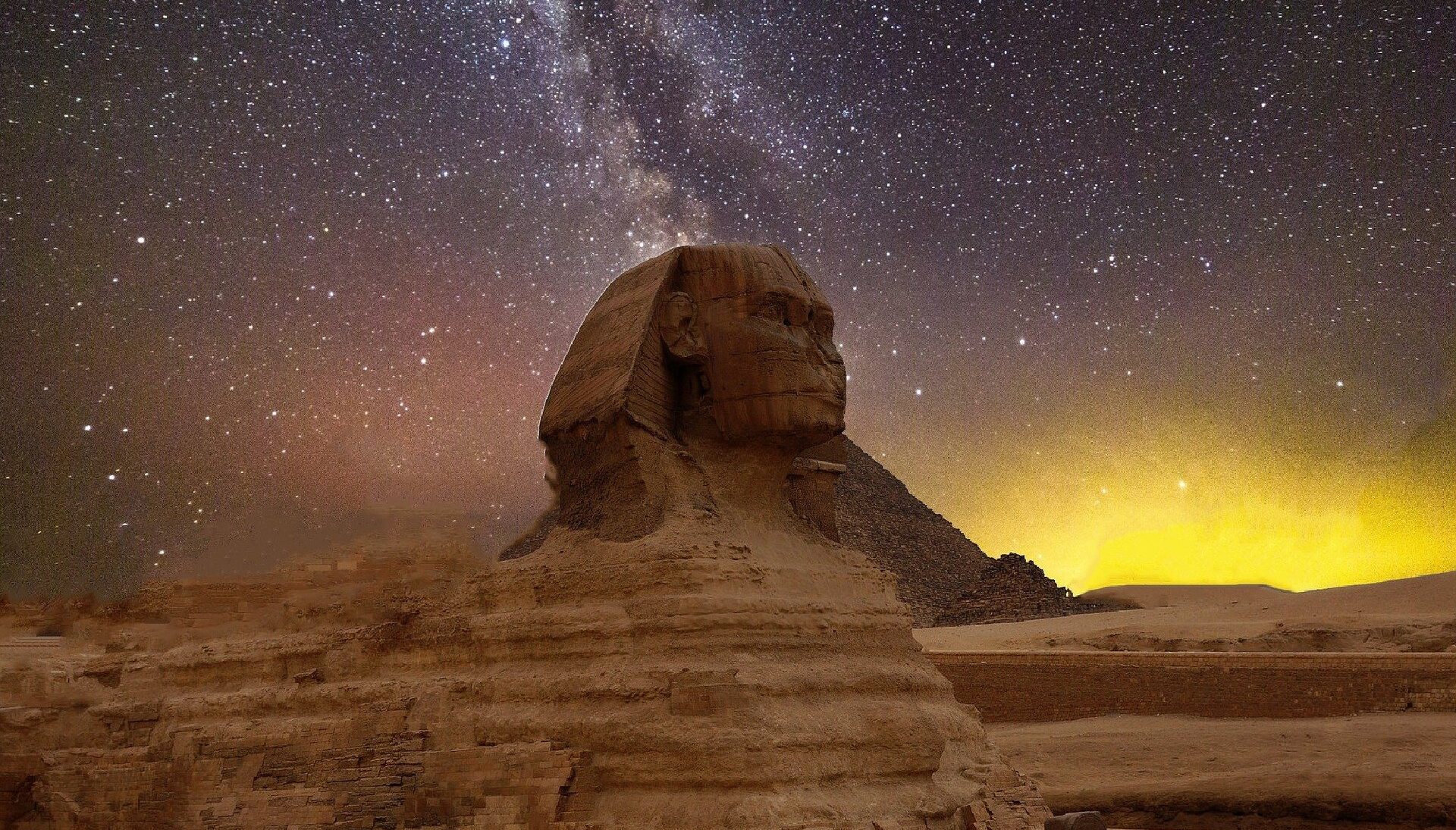
We start the day with breakfast, and before us awaits a drive to Giza. We will start our tour with the complex of three great pyramids: Cheops, Chefren and Mykerinos. The Pyramid in Giza is one of the seven ancient wonders of the world. The largest of the pyramids, built with over 2 million stone blocks, was originally 146 meters, but thousands of years of erosion have reduced its height to a still impressive 139 meters. The tomb of Pharaoh Cheops is the oldest of the seven wonders of the ancient world and the only one that has survived to modern times. If just looking at the pyramid is not enough, we have a proposal for those looking for excitement; you will be able to enter the pyramid.
Another option for volunteers is a camel ride.
And when talking about Giza, you cannot miss the Great Sphinx, which is a 73 meter long and 20 meter high statue with the body of a lion and with a human head.
In the afternoon we will go to the National Museum of Egyptian Civilization. The museum opened just after a ceremonial procession of royal boats carried the mummified remains of 22 pharaohs – 19 kings and 4 queens – through the capital to their new resting place.
In addition to the mummies, which are undoubtedly the greatest attraction of the museum, there are artifacts depicting the Egyptian civilization from prehistoric times to the present day.
In the evening, for volunteers, participation in the Sound and Light Show and a dinner with a view of the colorfully illuminated pyramids (at additional cost).
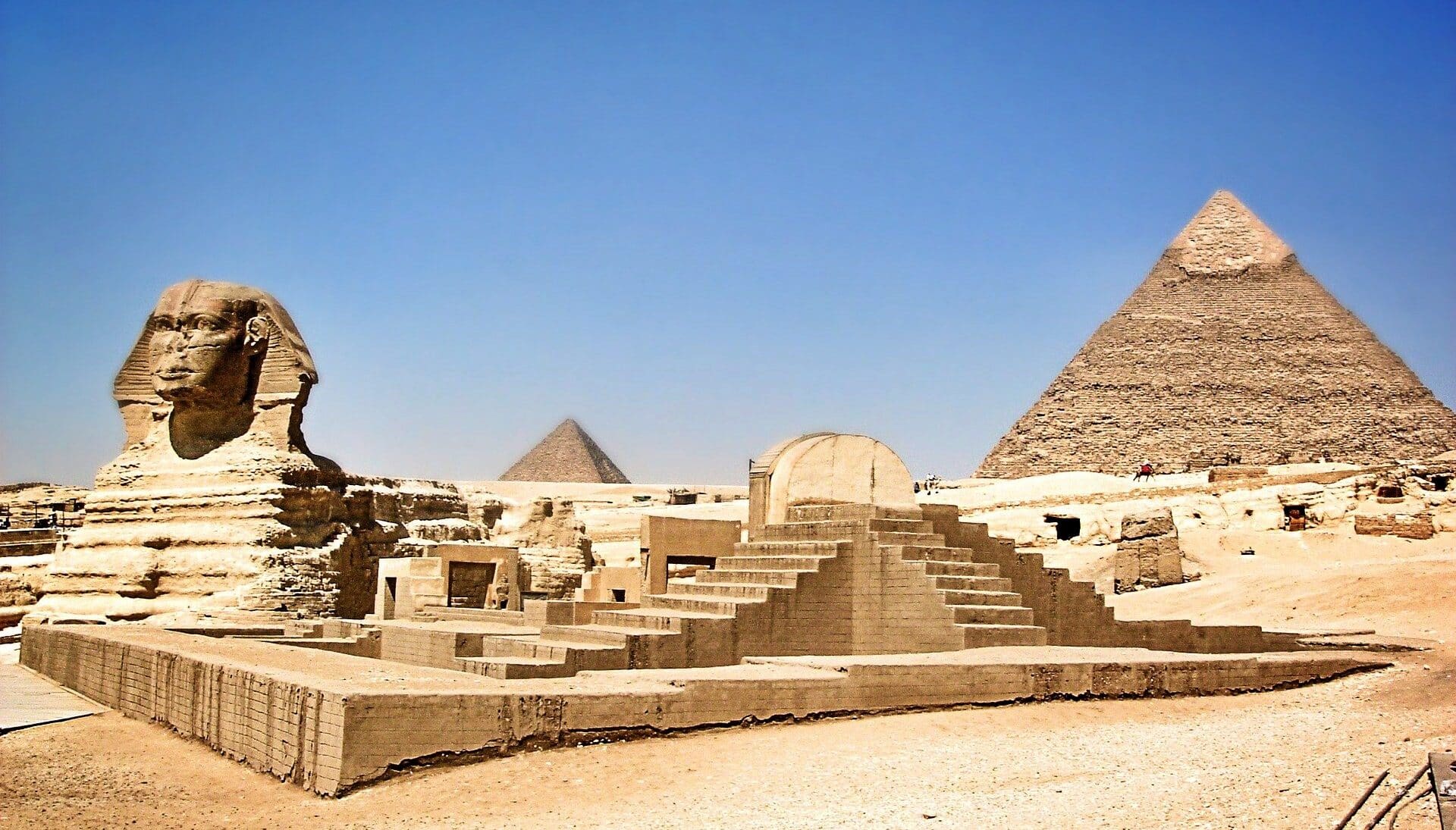
We are awakening by the thought that we are in the land of the pharaohs, so we must take advantage of every opportunity to see and remember as much as possible. Immediately after breakfast, which will provide us with energy for another day of adventure, we go to the airport, from where we will fly to Luxor.
On site, in the afternoon, we will board a luxury ship, which will take us on a cruise along the longest river in the world. Before that, however, we will visit the complex of temples in Luxor and Karnak. The central place is occupied by the temple of Amun-Ra, which is the world’s largest temple with a columned hall – the so-called “Great Hypostyle”.
The two following buildings are a temple dedicated to the god of war –Montu, and the other one erected in honor of the goddess Mut, the wife of Amon. The beginning of the development of this place is the period of the Middle Kingdom. The subsequent pharaohs, along with the increasing importance of Thebes, wanted to leave something behind in Karnak. Karnak was not only the center of Amun’s cult and his earthly dwelling, but also the place where the priests lived and worked.
In this area there was also a sacred lake, as well as kitchens and workshops where temple equipment and devotional items were produced. Particular attention is drawn to the mentioned hypostyle room, a space in which the ceiling is based on columns. In the one in Karnak there are 134 huge columns, and the interior is decorated witch polychrome, some of which have survived to our times.
Although in antiquity the complex was treated as a quarry, several gems have survived to this day. One of these includes the largest obelisk in Egypt made of single block of granite, dedicated to Queen Hatshepsut. There used to be a second obelisk here, but the Emperor Constantine moved it to Rome.
In the evening for those who wish, once again a visit to Luxor. It is one of the two temples open to visitors in the evening. Against the background of the dark, night sky, beautifully illuminated colonnades give the impression of mystery, mysticism and look very spectacular. This provides a completely different experience than during the day. Overnight stay at the ship.
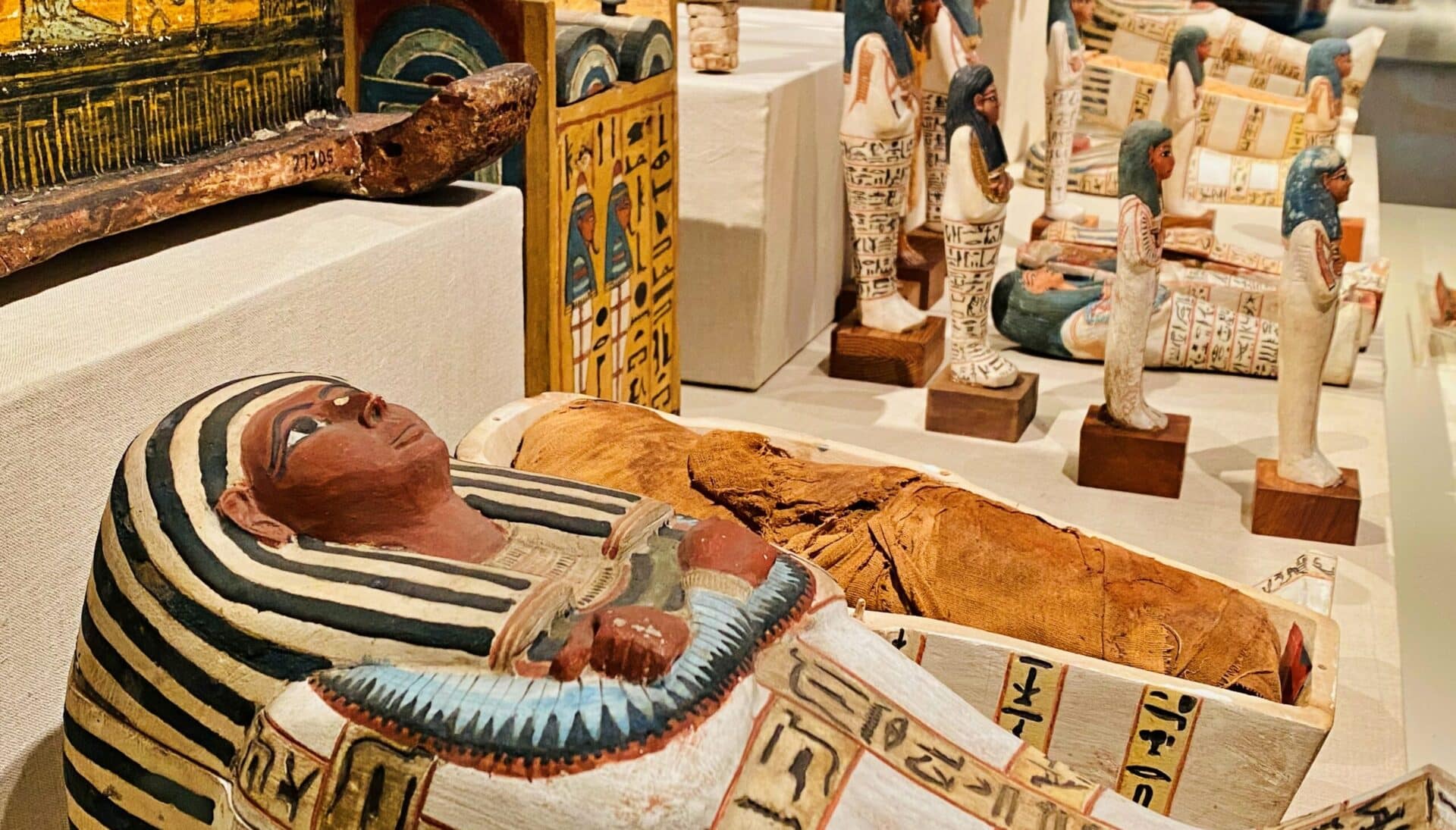
Early wake up for volunteers who in advance will declare their desire to fly a balloon at sunrise (at additional cost). A balloon ride is an attraction in itself, while a flight over the Valley of the Kings, with Hatshepsut’s temple in the background, is extraordinary.
After breakfast, a drive to the Valley of the Kings, the place where the dead pharaohs were buried. 64 tombs were carved in the rock walls. We will see, among others, the Tutankhamen’s Tomb, the discovery of which was the greatest archaeological sensation of the 20th century. The grave was found in November of 1922. The king’s mummy was weakly preserved. It was located in a sarcophagus, in which there were as many as 3 coffins, including the inner one – made of gold. On the mummy’s head, rested a gold mask weighing over 10 kg, which we will see in the museum of Cairo. The mask from the Tutankhamen’s tomb is one of the greatest masterpieces of Egyptian art. It is made of two sheets of gold plate decorated with semi-precious stones such as turquoise and lapis lazuli.
There is also a spell on the mask from the Book of the Dead, which served the Egyptians as a guide to the afterlife. Admiring the beautiful paintings on the walls and vaults of the tombs, depicting life after death, we will learn the story of the “curse of the pharaoh Tutankhamun”.
Then we will go to the Temple of Queen Hatshepsut. It is a unique temple because it was built in the form of terraces. Hatshepsut was the only woman to rule Egypt for a longer time. She ruled for 20 years and it was a period of peace, well-developing trade, and good relations with neighbors. The temple is built high on the rock slope and consists of three terraces. There is also a polish accent and a commemorative plaque.
The capital of Egypt in the Middle and New Kingdom period – Thebes, with buildings in Luxor and Karnak and necropolises in the Valley of the Kings and the Valley of the Queens, still makes a great impression and strikes with the magnificence and grandeur of the ancient Egyptian civilization. In 1979, the complex was inscribed on the UNESCO World Heritage List.
After a day of emotional encounter with the history of the mighty pharaohs, we will spend the night on the ship.
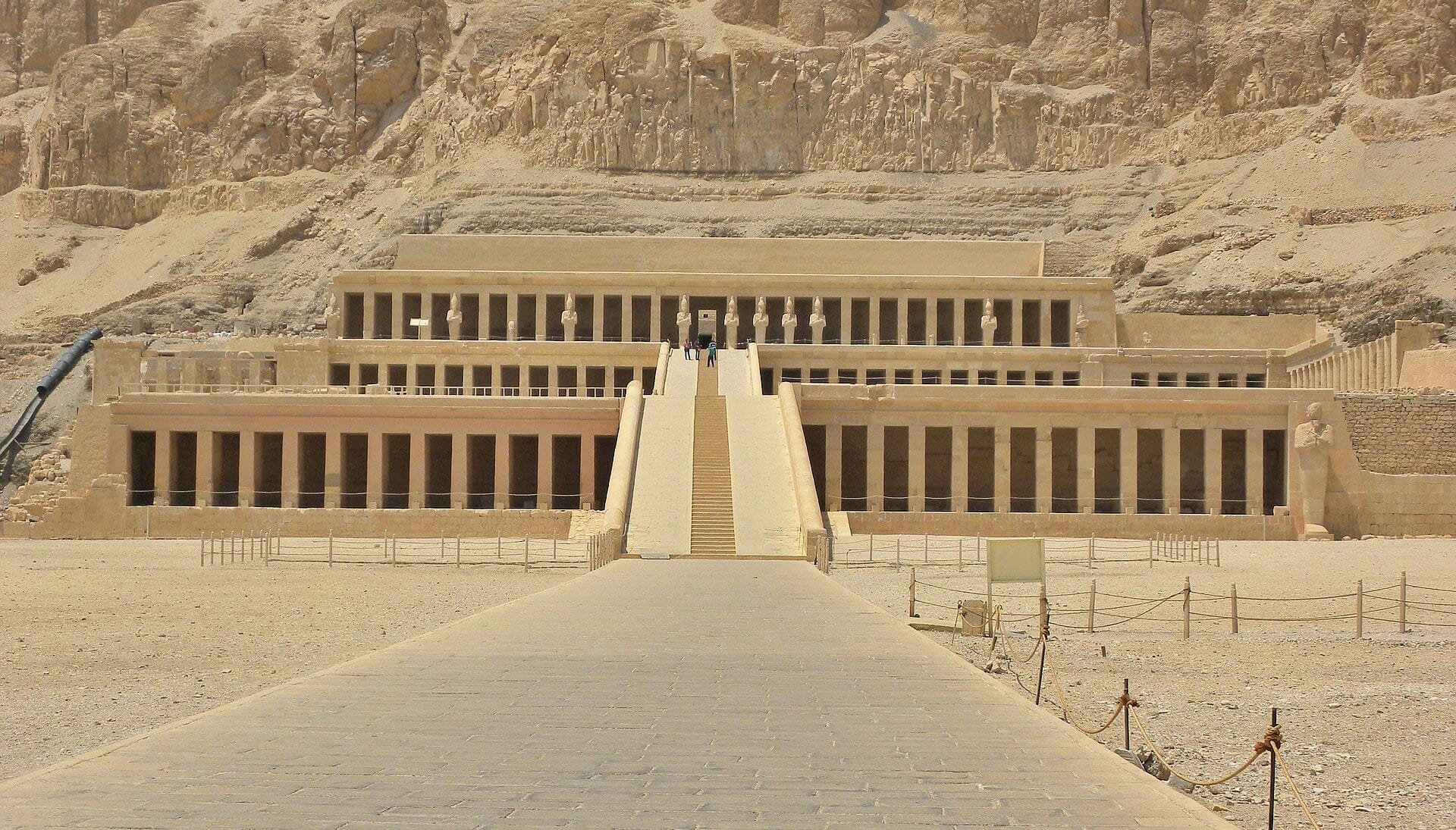
After breakfast we will visit the temple of Edfu. The city is known as a place of worship of the god Horus, so the temple built during the Ptolemaic Dynasty is dedicated to him. Legends say that the temple was built in the place where the battle between Horus, the Egyptian god of the sky, and Seth, who was identified with chaos and demonic forces, took place.
It is the best preserved temple in Egypt, which provides a lot of information about the construction, but above all, the times of the great pharaohs and Egyptian gods. We will see pylons, courtyards, beautiful columns decorated with floral motifs, the hypostyle hall and the sacrifice hall, behind which is the sanctuary.
Around there are chapels dedicated to other deities, where their statues and other objects of worship were kept. There is a library room in the temple, and a catalog of books with 21 sections, which are engraved on its wall.
In the afternoon, a visit to the unique, due to the fact it is a double temple, a Temple of Kom Ombo. Its construction consists of two identical and connected parts, dedicated to two gods: Sobek- the crocodile-headed god of fertility, and Horus the Elder.
The assumption of the builders of the temple lying several dozen kilometers north of Aswan was a symmetrical arrangement referring to the mythical connection between the deities. This is reflected in the two identical entrances, hypostyles and sanctuaries.
The building was built on a rock right next to the bend of the Nile, in a place where crocodiles, sacred to the Egyptians, used to rest in ancient times. The Greek historian called the father of history – Herodotus, already called Egypt “the gift of the Nile” writing about the Egyptian crocodiles. He emphasized their importance in the life and religion of ancient civilization.
Records have survived to this day, confirming the embalming and decorating reptiles after death and depositing them in necropolises. The sanctuary stood close to the river, and successive floods of the Nile washed away the escarpment, and the abandoned temple was slowly buried by the sands of time. The temple has been unveiled, but the sacred crocodiles are no longer lounging on the sandy beach.
Overnight stay at the ship.
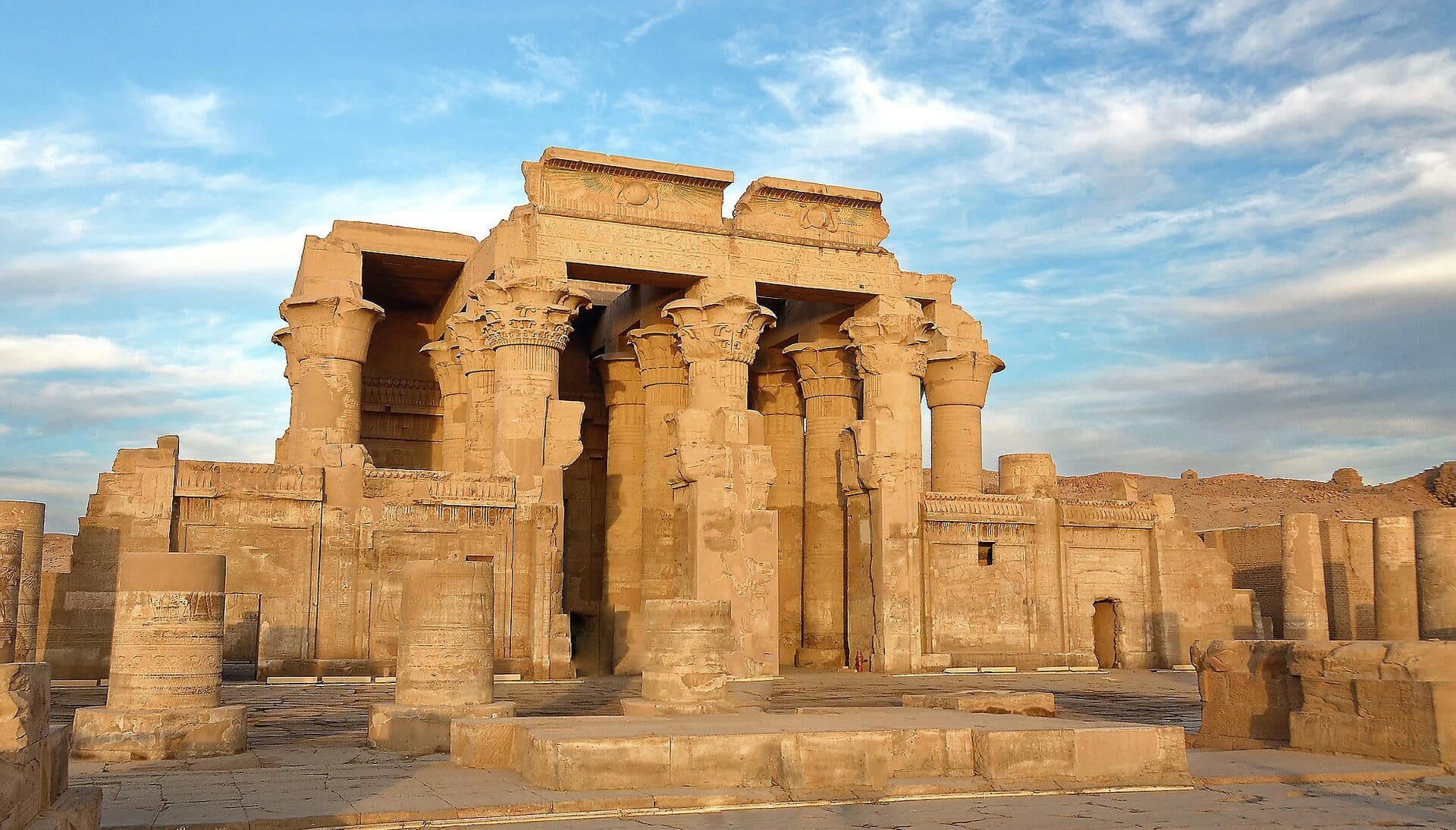
A morning visit to Abu Simel (optional), a complex of two impressive temples, consisting of the tomb of Ramasses II and a smaller one, of his wife Nefertari. The entrance to the temple of Ramesses II is decorated with 4 characteristic 20-meter statues of Ramesses II carved in the rock, and between their legs are smaller figures representing members of the royal family.
The second, smaller temple is decorated with 6 statues of Ramesses the Great and Nefertari, and the fact they are of equal size testifies to the great love that the pharaoh had for his royal wife. The temples were built in the 13th century BC, during the reign of Ramesses II. They were dug out of the sand in the year 1817.
They were then located on the Nile, today on the area of an artificially created Lake Nasser. It wouldn’t take much for the temples recently discovered from under the sands, to be covered with water.
The construction of the Great Aswan Dam in the 1960’s threatened to flood the temples, but it was decided to move them elsewhere. The monuments were cut out of the rocks and transported to a higher ground, where they were embedded. The team taking part in the UNESCO – supervised rescue operation, was led by a Polish archeologist and Egyptologist – Professor Kazimierz Michalowski.
We will watch the sunset by going on a ride in a typical Egyptian wind powered boat (felucca).
For any volunteers, a visit to a Numbian village in the evening. There, we will discover the original life of its inhabitants and learn about their traditions, culture and language. Overnight stay at the ship.
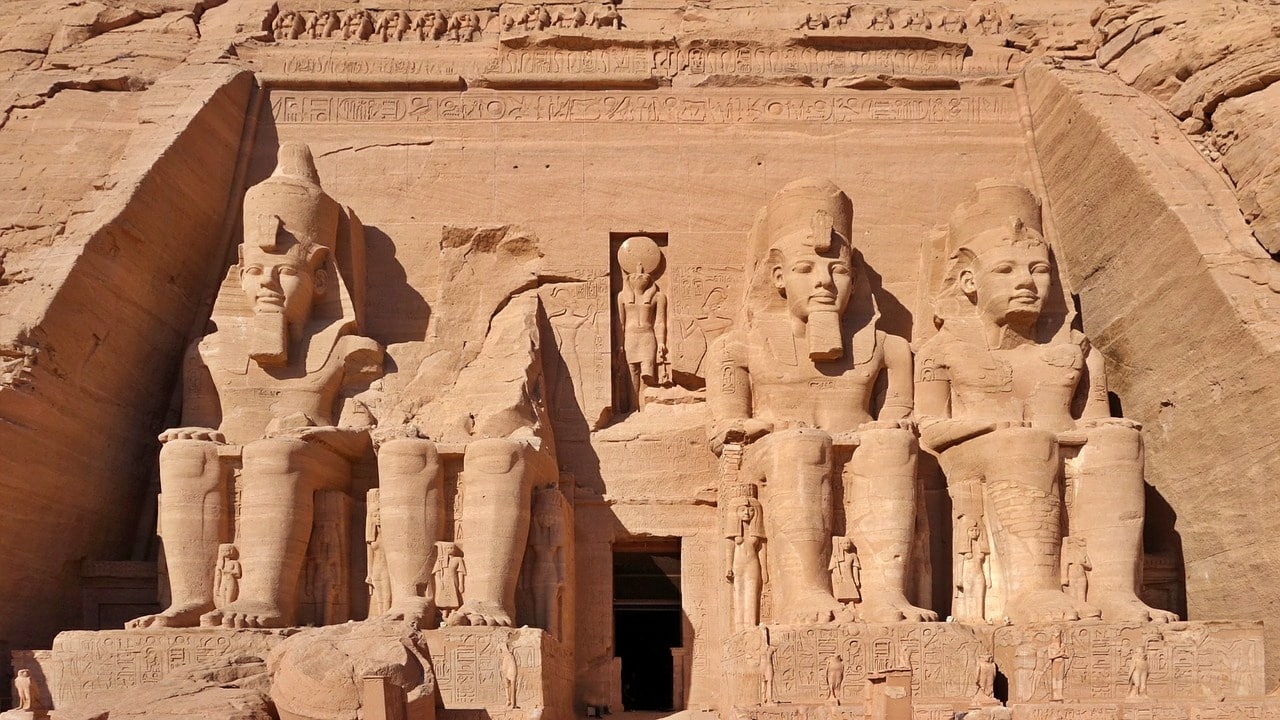
We are leaving the ship on which we have sailed the waters of the Nile for the last few days. We will go to the Temple of Isis – a beautiful temple complex, one of the most picturesque in Egypt. Located on the Nile River, at the height of the first cataract, the Island of Philae is a sacred place. According to the beliefs of the ancient Egyptians, the island was the first piece of land to emerge from the immensity of chaos.
During the times of the great pharaohs there was a place of worship on the Island of Isis, and a temple dedicated to her was built here. At this point, it is necessary to mention the Aswan Dam again, because its construction also threatened the existence of the historic building on Philae.
Putting the dam on the Nile caused the water to pile up, so that the island is regularly flooded. And once again, the rescue came, because it was decided to move the Temple of Isis to the nearby island of Agilkia. We will also see the dam itself. For millennia, Egypt’s economy was dependent on the Nile, because the intensity of flooding determined how much arable land could be irrigated. This is why the aforementioned Herodotus wrote that Egypt is a gift of the Nile. The work on the Great Aswan Dam lasted for over 10 years. It is one of the two dams on the Nile and it is 3600 meters long, 980 meters wide at the base and 40 meters at the top.
The Egyptians learned the salutary effects of building the dam very quickly, because the droughts that hit the country would cause terrible famine. Thanks to the water stored in the artificial reservoir, which is Lake Nasser, they managed to prevent the disaster.
The electricity produced by the dam’s hydroelectric power plant, supplies households as well as production plants.
An afternoon flight to Cairo. On site- hotel accommodation and an overnight stay.
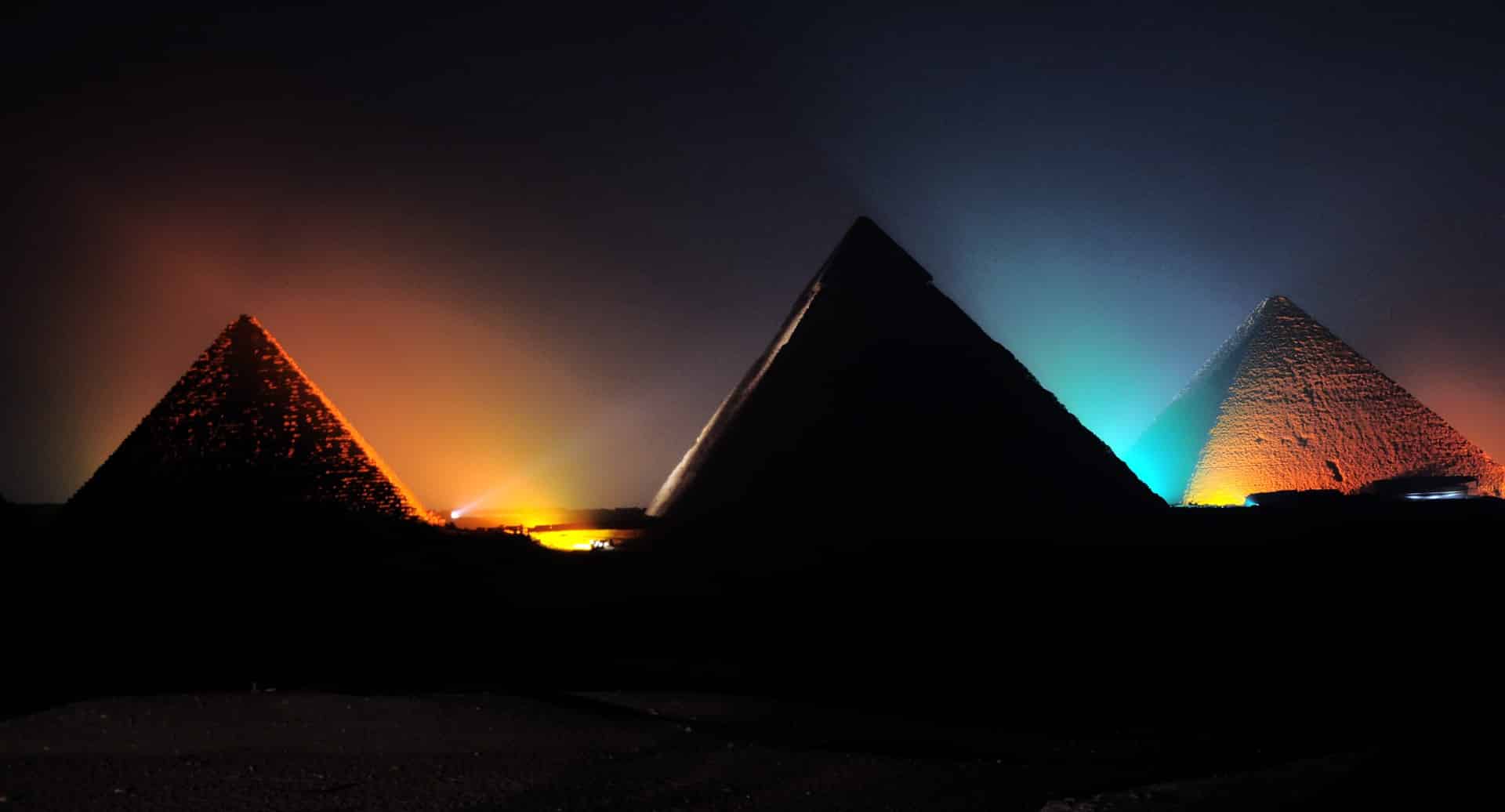
The last hours in Egypt, are ahead of us and we will spend this time visiting Cairo, one of the largest Islamic cities in the world. The bustling capital of Egypt today began as a Roman fort, at the beginning of our era.
Years passed, the military settlement began to grow and a city was founded. In 970 AD, Al-Azhar Mosque was built in Cairo, and soon afterwards a university was opened. The university quickly became known as one of the most renowned Muslim theological colleges in the world and Cairo became the new center of science and philosophy. The construction of the first railway line and Suez Canal, which was used to facilitate contact with Europe, contributed to the further development of the city.
The rulers of Egypt, who were expanding Cairo, entrusted the works to, among others, French architects and you can still see the fruits of their work. A part of the city designed by the French is characterized by wide avenues, open spaces and lots of greenery.
The old districts have a completely different character, because you can see here dense buildings with crowded alleys that often end in dead ends. Souvenirs will be available for purchase. If possible, we will also try to see Cairo from the perspective of the local residents. In the late evening, transfer from Cairo airport, customs clearance and a flight to Chicago.
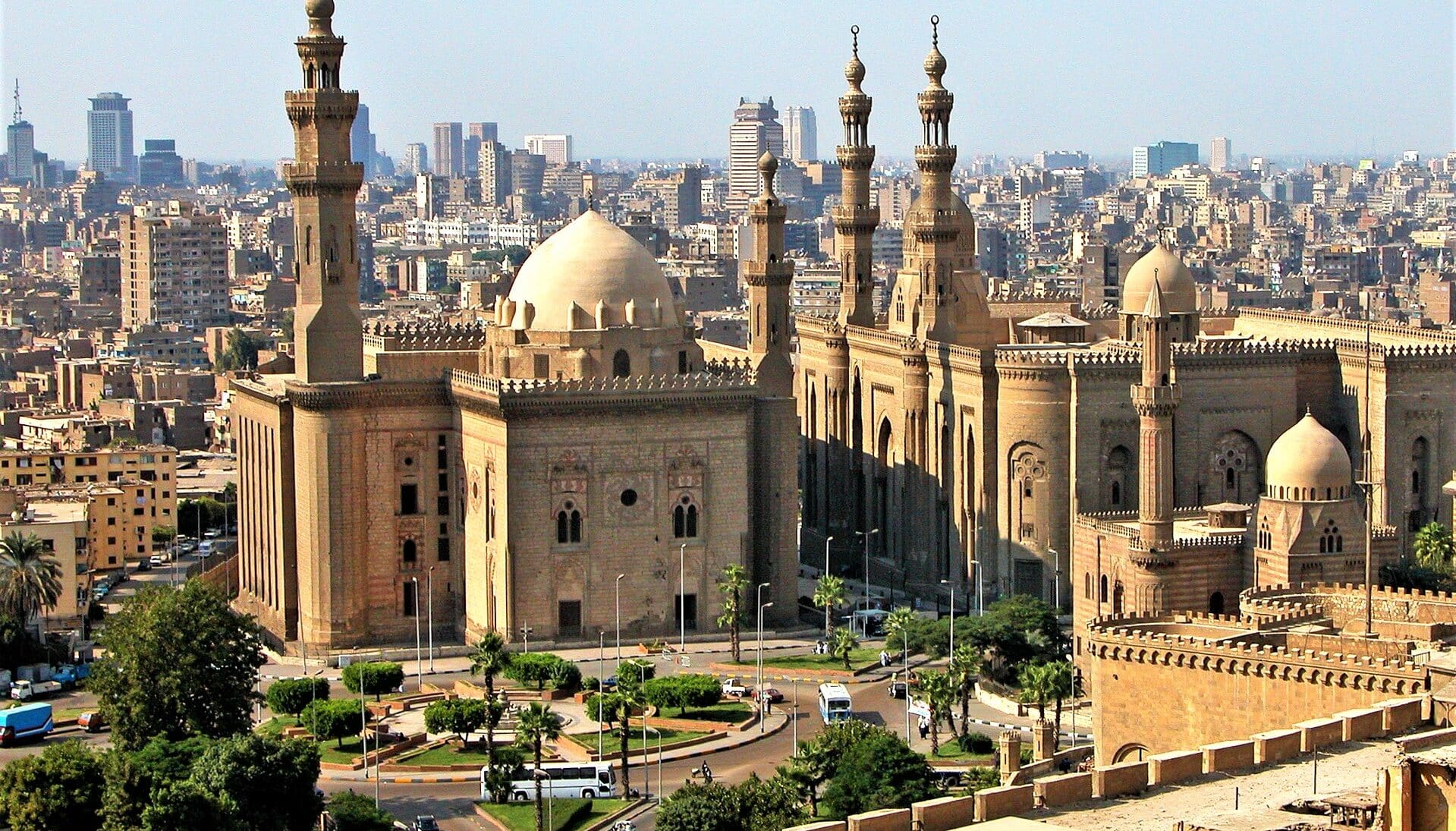
- Arrival to Chicago. Farewell to the group.
Trasa wybranej wycieczki
Firma nie ponosi odpowiedzialności za stracone mienie klienta w wyniku włamania, kradzieży, zgubienia itp. nie ponosimy również odpowiedzialności za straty klienta w motelach. Firma Rek Travel zastrzega sobie prawo do zmiany programu, dyktowanych okolicznościami niezależnymi od niej. Klient zobowiązany jest do przestrzegania regulaminu wycieczki. Uczestnicy wycieczki ubezpieczeni są zgodnie z wymogami amerykańskiego Departamentu Transportu na łączną kwotę $5000.000 (polisa do wglądu na życzenie klienta). Za dodatkową opłatą uczestnicy mogą ubezpieczyć się na wypadek leczenia szpitalnego i ambulatoryjnego schorzeń nabytych w trakcie wycieczki oraz nieszczęśliwych wypadków w obiektach zwiedzanych (wszelkie informacje w biurze).
 Rek Travel Adventure
Rek Travel Adventure Rek Travel Polska
Rek Travel Polska